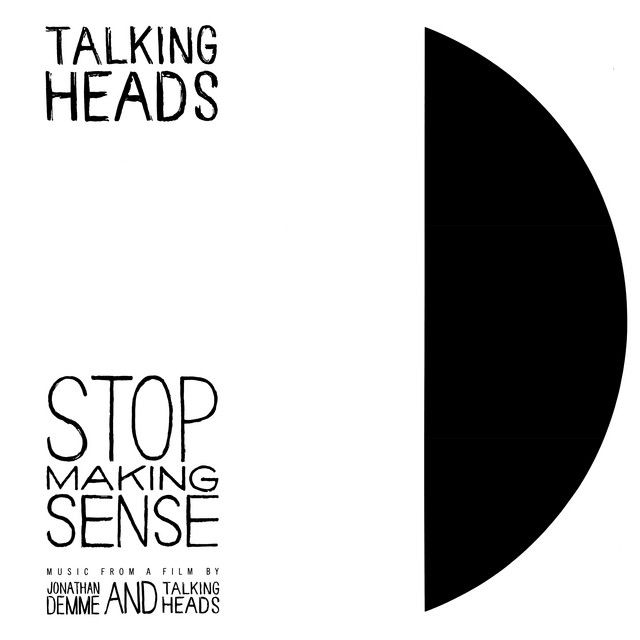Song Stories: Talking Heads: Life During Wartime
Talking Heads tack Life During Wartime, captures the chaotic essence of living during times of crisis. Released in 1979 as a part of their third studio album 'Fear of Music' the song is highly energetic urgent affair, that creates a underlying sense of dread and unease that permeates both its sound and message. It’s a track that has continued to resonate through the years, not just for its relevance in moments of conflict, but also for its unforgettable live performances, particularly the iconic rendition captured in the 1984 concert film 'Stop Making Sense'.
'Life During Wartime' opens with an almost hypnotic rhythm before frontman David Byrne’s unmistakable vocals cut through with the now-famous declaration, “This ain't no party, this ain't no disco.” This opening line immediately sets the tone for a song that is anything but conventional. With its bouncy, syncopated bassline and disorienting synths, the song instantly transports the listener into a world that is both exhilarating and unsettling.
The song's lyrics weave a surreal portrait of life under the constant threat of war. Byrne's fragmented verses paint a picture of a world upended by violence, fear, and paranoia. Lines like "Got to get to the factory / I got to get out of here" suggest an overwhelming sense of displacement.
The way Byrne delivers these lines is crucial to the song's power. His voice shifts from a detached observer to an individual urgently grappling with the existential weight of survival. There’s a sense that the world is being upended, but it’s not just the political landscape that’s in chaos; it's also the personal realm. The song’s recurring refrain, “This ain't no party, this ain't no disco, this ain't no fooling around,” encapsulates the tension between a desire to maintain normalcy in the face of devastation and the harsh reality that such attempts are futile.
While 'Life During Wartime' was an impactful track on 'Fear of Music', its live performances — particularly the version captured in the 1984 concert film 'Stop Making Sense' took the song to an entirely new level of intensity and engagement. Directed by Jonathan Demme, 'Stop Making Sense' is widely regarded as one of the greatest concert films ever made, showcasing the band’s groundbreaking live performances and artistic vision. Through Demme’s careful direction and the band's boundless energy, the film becomes more than just a live recording; it’s an immersive experience that captures the raw power of music.

In this iconic performance, 'Life During Wartime' takes on a life of its own, as David Byrne leads the band through an electrifying rendition of the track. The performance begins with Byrne alone onstage, his angular dance moves and disjointed gestures setting the stage for a song that is at once chaotic and choreographed. As the song progresses, the rest of the band gradually joins in, bassist Tina Weymouth, guitarist Jerry Harrison, and drummer Chris Frantz, each adding their distinctive touch to the unfolding musical tapestry. The layering of their instruments mimics the lyrical theme of adaptation, as each player integrates seamlessly into the frenzied rhythm of the song.
Visually, 'Stop Making Sense' is just as revolutionary. Byrne’s stark white suit, paired with the minimalist stage setup, draws attention to the band’s movements and the hypnotic rhythms. The set is bare but filled with purpose; each prop and visual cue seems designed to emphasize the tension of the music and the uneasy atmosphere of the performance. The lighting, too, plays a crucial role in creating a sense of drama and intensity. The shadows and sharp contrasts on the stage add to the feeling that something is constantly shifting, as if the world itself is in motion, never quite stable.
The whole film is often considered a landmark in the way concerts were recorded. It does not follow the traditional approach, this a lot more theatrical. 'Stop Making Sense' takes a slow-build approach that mirrors the momentum of a great album. The performance starts with frontman David Byrne walking onto an empty stage with nothing but an acoustic guitar and a boombox, launching into an intense solo rendition of 'Psycho Killer.' The stripped-down nature of this opening makes it feel intimate, drawing the audience in before the rest of the band gradually joins him song by song.
The set itself takes fans on a journey throughout the bands career, and sees them play some of their most iconic songs including 'Burning Down the House', 'This Must Be the Place' and 'Once in a Lifetime' as well as some deeper cuts such as 'What a Day That Was' A song from Byrne’s solo work and 'Take Me to the River', a gospel-infused cover of the Al Green song.
Many critics still believe 'Stop Making Sense' is the gold standard of concert films. The unique approach to filming proved that Talking Heads were not just one of the best live bands of the late 70s and early 80s but one of the most innovative bands ever.
Thank you for reading
Jack